Follow the link to download the October 21, 2023 issue of the syəcəb
Category: Tulalip News
Killer Time For Many at Local Trunk or Treat

By Kalvin Valdillez, Tulalip News
At the heart of Boom City, dozens of vehicles formed a large circle inside of the gravel lot. The owners of the vehicles, which consisted of approximately 30 families or groups, then proceeded to decorate the trunks of their cars, trucks, SUVs, and vans. Two motorcycle clubs set up shop in their respective areas, as did the Tulalip Police and Fire departments. From the vibrant and pixel world of Super Mario to haunted and spooky graveyards, there were numerous fun, creepy, and lighthearted Halloween-themed trunks this year.

Together We’re Better held their annual Trunk or Treat event on the afternoon of October 14 and brought smiles to over 500 community members from the Tulalip and Marysville area. Over the past decade, Trunk or Treat has become a community favorite event and a fun opportunity for the kids to participate in the trick-or-treat tradition in a safe environment.
Wearing costumes of their favorite characters, superheroes, villains, princesses, or monsters, the kids visited each trunk and received a sugary snack. The Apple Guy was in attendance and gifted each trick-or-treater with fresh fruit, which many of the younger kids received with enthusiasm. Members of the local recovery community got into the Halloween spirit and dressed in costume, as a group, as various characters straight outta Andy’s toy box, from the Pixar classic, Toy Story. Instead of candy, Sandy Pitchforth and family let the children pick a book to take home from a large assortment.
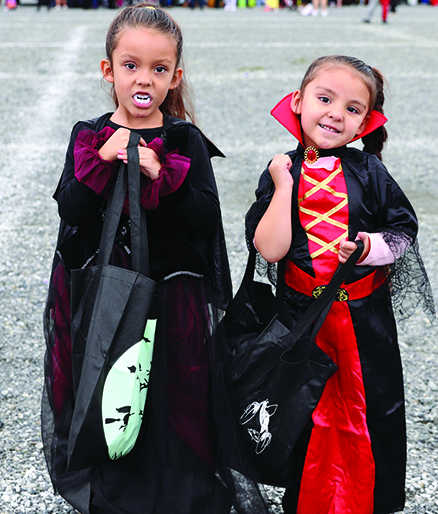
The best interactions were between the kids who were overjoyed anytime they met another kid dressed in a costume from the same universe. Countless Teenage Mutant Ninja Turtles, Batmans and Jokers, Marios and Luigis, Buzzs and Woodys, and Spongebobs and Patricks crossed paths on that cloudy October day. Many of the kids used the power of imagination to fully immerse themselves into the world of their characters. And before anyone knew it, damsels were in distress, heroes were chasing villains, goofy goobers were goofy goobering, and turtles were sharing radical fighting techniques amongst each other.
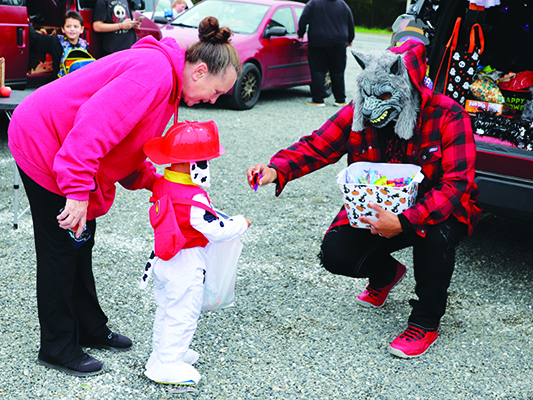
Throughout the years of the pandemic, this was one of the only events that survived a slew of cancellations due to health and safety concerns. Trunk or Treat adapted to the times and altered their event to practice social distancing by changing their gathering to a drive-thru celebration. During this time, the Tribe cancelled their popular community Halloween party, but collaborated with Together We’re Better to keep the ghoul times rolling. The first year, the Tribe donated candy to the event. The second and third year, the Tribe donated buckets and candy, and a number of departments reserved spaces and decorated trunks of their own as well.

Now that the Tribe’s Halloween events are making a comeback, Trunk or Treat returned to its (grass)roots and this year’s event was back to being 100% volunteer-based and community funded. It was a great turnout, good times were had by all, and TWB’s Trunk or Treat entered a new decade with thrilling success. With the holiday just around the corner, this was the perfect way to get everybody into Halloween mode and get their spooky on.
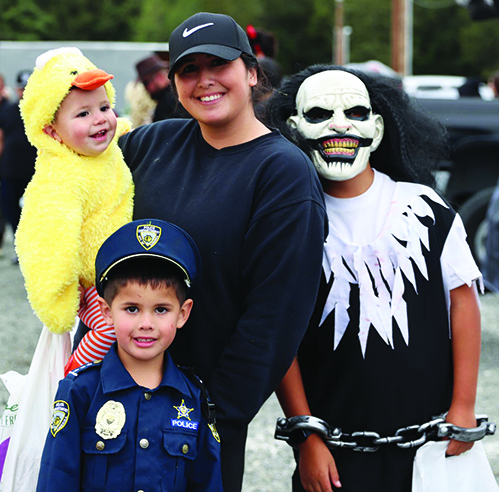
Said Malory Simpson, Together We’re Better Founder, “I love to see all the kids and it’s really exciting to see all the people come together to make it a successful event for our community. And that’s for both Marysville and Tulalip, a part of Together We’re Better has always been about bringing the communities together. And it’s important for me to continue Trunk or Treat because it’s one of my favorite events. I think people really had a lot of fun, as well as the volunteers.”

If you are looking to get more involved with the community, Together We’re Better is always accepting donations, whether that is goods, funds, or your personal volunteered time. For more information, please contact Malory Simpson at (425) 905-9137.
A Baseball Life: The Mike Ashman Story

By Micheal Rios, Tulalip News
In mid-September, the Seattle Mariners hosted the Los Angeles Angels in a three-game series at T-Mobile Park. At the time, the home team Mariners were still in the thick of a heated playoff race, while the Angels, having suffered a litany of season-ending injuries to their star players, were attempting to remain competitive as their calamitous season came to a close.
Hours before the first pitch of their series-opening game on Monday, September 11, a Tulalip tribal member, dawning the red and gray team-issued colors of the Angels, emerged from the Los Angeles dugout, casually walked out to the pitcher’s mound, and got to work. That man is Mike Ashman, #91 on the Angels’ official coaching directory, and a professional batting practice pitcher in Major League Baseball.

Unlike the typical pitchers employed by baseball teams, Ashman’s job isn’t achieved by striking out hitters or getting them to hit in-field popups. Instead, his primary objective is to throw 60-mph pitches at Angel’s franchise player Mike Trout, and others in the lineup, to find their bat-swinging groove pregame as they turn his precisely placed pitches into thunderclap-sounding home runs.
Pitch after pitch, monstrous hit after monstrous hit, Ashman builds the confidence of professional hitters who are paid millions of dollars to hit a 3-inch in-diameter baseball from spring training in March to MLB playoffs in October. The grueling 162-game regular season is a marathon for managers and players alike who enter each season with dreams of winning the World Series.
But for the 63-year-old Tulalip elder, the baseball grind is the only life he’s known. And what some call a grind, he calls living a dream.
“I love this game. It really has been everything to me, and when I take a moment to reflect on all the experiences, all the travel and relationships I’ve made, it’s really been unbelievable,” said Ashman while sitting nonchalantly on the Angels dugout rail. “As a kid, I played all sports but baseball was my best sport. I played from Little League to high school. Then, I continued at San Bernardino Valley College for two years before transferring to Cal Poly Pomona, where I was part of the 1980 Division II national champions.
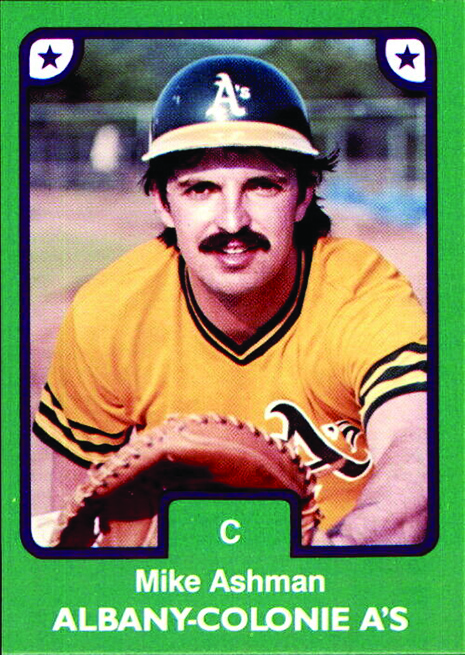
“After my senior year at Cal Poly, I got drafted by the Oakland A’s and spent five years in their minor league system, making it up to the Triple-A level. Then moved on to the Pittsburgh Pirates for one year playing Double-A and Triple-A ball. After that last year with Pittsburgh, I was 27-years-old and knew I wasn’t good enough to make it to the big leagues. I stepped away from the game and figured it was time to get on with the real world. So, I finished up my business administration degree and got a job with Allstate Insurance.”
The humble elder glossed over just how good his younger self was at hitting, throwing, and catching a baseball. In a detailed accounting, The Poly Post described Ashman as a star player for Bloomington High School, where he was a first-team selection for the San Andreas League twice. In 1975, his team was the California Interscholastic Federation runner-up. Ashman later flourished at Cal Poly where he earned All-America honors and led the Broncos to its 1980 championship title, batting a whopping .365.

Not only did he spend six years playing professionally in the Oakland Athletics’ and Pittsburgh Pirates’ organizations, but he was also a member of the 1980 Collegiate National Team and represented his country while playing in Japan for the U.S. Olympic Team. To recap, in his early 20s, Mike Ashman was an absolute stud. His talents in the batter’s box allowed him to tour the country playing the sport he loved both as a collegiate athlete and professional minor leaguer. His versatile skills on green diamond also gave him the opportunity to travel the globe while representing his country in world champion tournaments.
“Think of it back then as the equivalent of the World Baseball Classic or better yet, the Olympics. I was just a college kid playing against grown men, professionals from Japan, Korea, Cuba, and Italy. We played in all the major league parks in Japan, which was just amazing to me at the time. Our team performed well for a bunch of kids and we brought home a bronze medal,” Ashman said.
Following a short stint in the ‘real world’, where left baseball and worked an actual nine-to-five, he found a new calling for the game he loved. Although this time it wasn’t playing, it was coaching.
Ashman was an assistant coach at Riverside Community College for five years and hitting coach for the University of Nebraska for one season before settling in as head coach of his alma mater Cal Poly in 1996. He’d spend 15 years at the helm, amassing an overall record of 358-419-4. In 2010, the grizzled coach opted to resign in order to answer a new call being offered by the big leagues.

“Coach Ashman has been instrumental in the development of countless young men competing for Cal Poly Pomona, especially on a personal basis,” said Director of Intercollegiate Athletics Brian Swanson in The Poly Post. “He has been a hands-on coach and continues to maintain relationships with student-athletes long after they have left the campus and have become professionals in their chosen profession.”
In 2011, Ashman entered the most recent chapter of his baseball journey. Accepting a full-time position as a batting practice pitcher for the Los Angeles Angels. During his tenure, he’s pitched to some of the greatest individual talents the game has ever seen. From 3x National League MVP Albert Pujols to 3x American League MVP Mike Trout, and, who some MLB commentators describe as the greatest player since Babe Ruth, 2021 American League MVP Shohei Ohtani.
“They’ve all lit me up,” Ashman says with a chuckle. “That’s the goal: to have them hitting for consistent power pregame so they can do it when it matters most. There’s nothing like being able to witness true greatness in action. And knowing I’m just a small part of their much larger stories is pretty cool.”

On that mid-September Monday, hours before a matchup with the Mariners, he takes his usual spot on the pitcher’s mound, behind a protective L screen. While he throws to a new up-and-coming crop of Angels hitters, his sister, Caroline, and daughter, Delaney, watch with admiration as their major leaguer throws pitch after pitch.
Following batting practice, Angels hitting coach Marcus Thames said of #91, “He’s coached in college. He’s coached in pro ball, and he’s played in pro ball. He’s a jack of all trades, but most of all he knows the game. When it comes to batting practice, he knows what kind of pitches each hitter likes and where to place them so our guys can build their confidence and get their hits going. Whatever our guys need, he’s there for them. He’s great at what he does.”
With the 2023 season nearing its end and his 64th birthday only weeks away, Ashman is asked how much longer he plans to dedicate his life to the game he loves.
While pondering his answer, the Tulalip baseball pioneer responds with, “It’s funny because I tell people I’ve only worked three years my entire life, the three years I was an Allstate agent. It’s rare for someone to do this as long as I have. It’s something I think about from time to time. But every season brings new players, new challenges with new solutions, and new conversations in the clubhouse.”
Ashman then recalled a conversation with the face of the Angels franchise, Mike Trout. “Back in 2019, when Trout signed his 12-year, $400 million contract extension, he told me, ‘You’re staying until the end of my contract.’ My response to him was ‘Do you realize I’ll be 70 by then?!’ and he just looked at me and smiled. So, to answer your question, I guess I’ll be doing it as long as I can.”
A hard-fought outing for the Heritage Hawks

By Wade Sheldon, Tulalip News
Amidst the crisp air of the Cascade Mountains, a dedicated group of Tulalip community members embarked on a lengthy journey to support their beloved football team, the Tulalip Heritage Hawks. Their destination: Concrete High School Stadium on the chilly night of Thursday, October 12th.
This season has been nothing short of a test for the 8-man Iron football team, with a division record of 2-4 and an overall record of 2-5. Their recent victory over the Crescent Loggers had the Hawks brimming with optimism. However, they encountered a formidable challenge when they faced off against the tough Concrete Lions.
The Lions wasted no time setting the tone for the game, racing to a 28-0 lead during the first half. The Hawks grappled with moving the ball downfield, needing help to secure first downs and find themselves in scoring range.
But halftime proved to be a turning point. A motivating pep talk from the coach and a quarterback change breathed new life into the Hawks. With unwavering determination, they took to the field for the second half. Their defense made crucial stops, which allowed them to capitalize on two possessions, culminating in a touchdown and a successful two-point conversion, narrowing the score to 16-28.

However, the day’s standout performance came from Concrete’s quarterback, who seemed unstoppable. His 50-yard touchdown pass and a successful rushing attempt left the Hawks unable to counter. As the game concluded, the scoreboard read Tulalip 16, Concrete 40.
“I think we started slow; it was a rough first quarter; we gave up a couple of touchdowns,” Defensive Coordinator Deyamonta Diaz said. “They had a talented quarterback; we had watched film on him and knew he was good. I told the team if they look fast on film, they are probably faster in person. In the second half, we made a good adjustment, and the guys kicked it in gear, tried to salvage something of it and put a couple of touchdowns on the board. You got to be ready all four quarters, and don’t wait, was our message to the team after the loss.”
Deyamonta continued, “This has been a rebuilding year, and we have had some good things to be proud of. The level of commitment, work ethic, and consistency has risen. The kids are dedicated on and off the field. It shows in their schoolwork and how they hold themselves in the community. We snapped a 3-year losing streak, putting together a couple of wins. The season isn’t over yet, and we look to win the next two and hopefully make the playoffs.”
With just two games remaining in the season, the Hawks are determined to finish on a high note. Their last home game is slated for Saturday, October 21st, and they’ll close out the season on Friday, October 27th, facing Lummi in Bellingham.
Honoring Indigenous Peoples’ Day
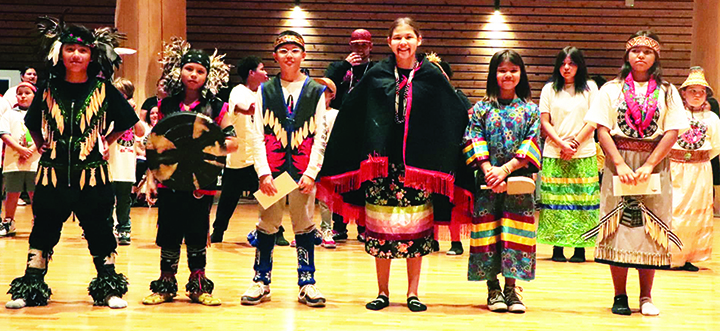
By Wade Sheldon, Tulalip News
In commemoration of Indigenous Peoples’ Day, the Tulalip Tribes hosted a heartfelt dinner and coastal jam on Monday, October 9, at the Gathering Hall. Several hundred individuals gathered to honor and celebrate our Native traditions, fostering a deep spiritual connection that breathes life into our cultural heritage.
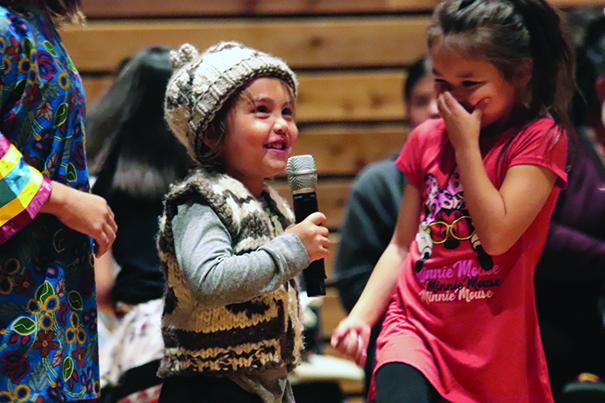
Indigenous Peoples’ Day emerged as a profound shift from the previously observed Columbus Day, marking a fundamental change in how we honor and acknowledge the original inhabitants of this land. This transformation represents a collective recognition of the enduring resilience and rich cultural heritage of Native Americans who have called North America home for millennia. It’s a day that seeks to celebrate their unique contributions, honor their enduring traditions, and acknowledge the profound history of Indigenous peoples, emphasizing a more inclusive and accurate narrative of the past.
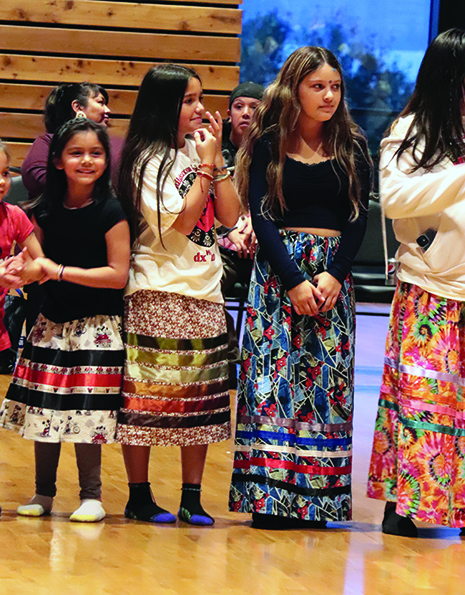
When asked what Indigenous People’s Day means to you, Tulalip tribal member Faith Valencia said, “What Indigenous Peoples Day means to me is mostly our community coming together for something that’s not sad or another reminder of a sad event. It’s a day to be ourselves. Learn our culture, be able to sing our songs, do our dance, and hang out with our family.”
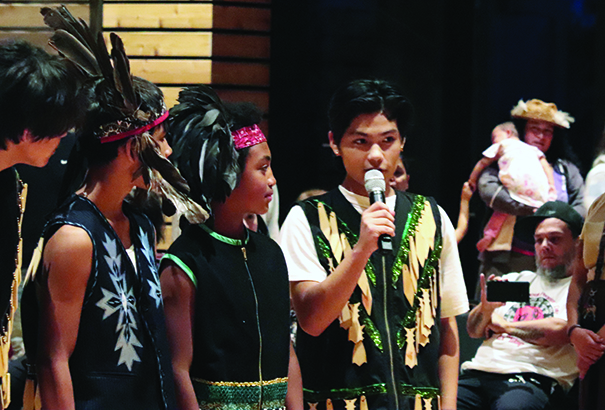
“Indigenous Peoples’ Day means we are celebrating our ancestors and how they took care of the land, learned how to survive, and helped one another,” Tulalip Tribal Elder Loretta Tom said. “It’s about how strong our native heritage is and the resilience it took to overcome the many atrocities they faced so that we could be here. It’s important to show the young ones how we gather, carry our tradition, and show what being Native is all about. It’s not just a gathering to have fun, but also to teach the young how to carry on when not here.”
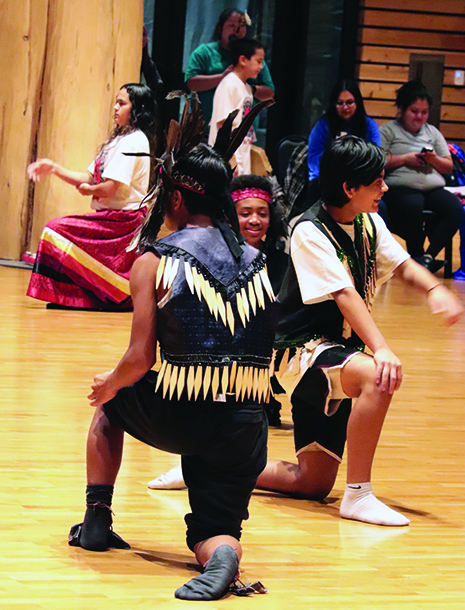
“To me, it’s just embracing your culture and being able to welcome everyone into one space and show what we represent and what we are about,” Tulalip tribal member Krislyn Parks said. “We used to have ceremonies like this every day, and we need to bring back those moments and show that we can still do what our ancestors did back in the day. I’m excited that a lot of people are out in their regalia showing out. It’s exciting to see what we have coming for the future.”

Bradley Paul William, dancer, and Tulalip tribal member, had this to say, “What Indigenous Peoples’ Day means to me is all of us gathering around to do our cultural and traditional things. It also means honoring our ancestors, doing what they couldn’t do, and keeping our culture alive.”
October 14, 2023 syəcəb
Follow the link to download the October 14, 2023 issue of the syəcəb
Justice for Gina

By Wade Sheldon, Tulalip News
A candlelight vigil was held in Marysville on Sunday, October 8, to remember Gina Blatchford, a beloved Tulalip tribal member. Family and friends gathered to show their support and create awareness, hoping someone may have information about the tragic incident.
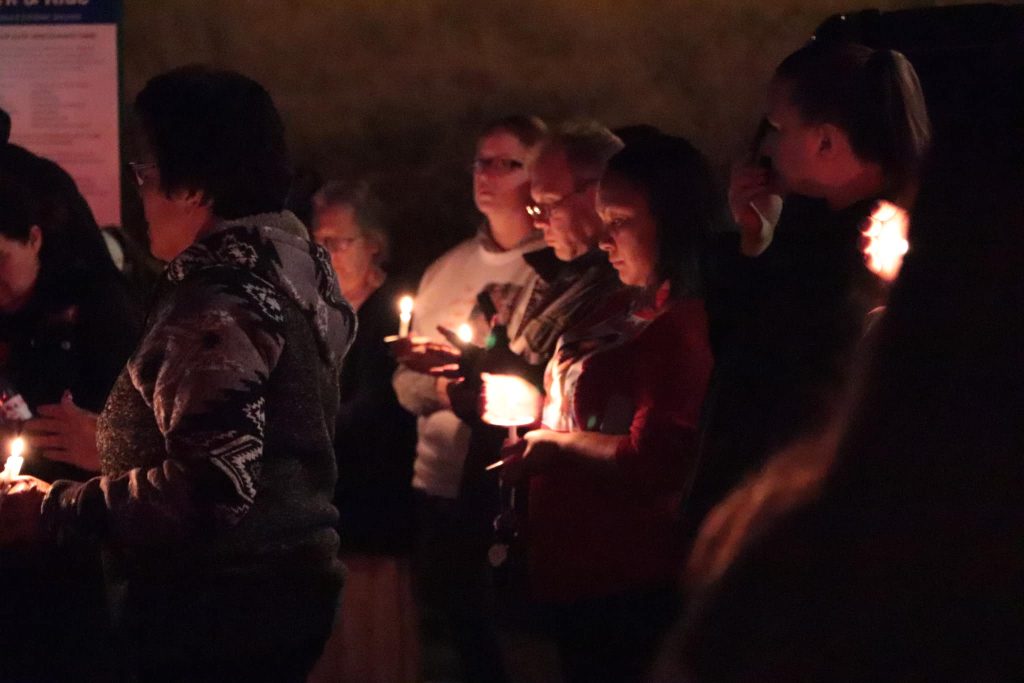
Gina Blatchford, a member of the Tulalip community, lost her life tragically in a hit-and-run incident. She was struck by a vehicle traveling northbound on I-5 near exit 199 in Marysville, Washington, on the morning of Wednesday, October 4.
“Whoever hit her on the freeway just kept going,” Tulalip tribal member Rocio Jack said. “Nobody has come forward with information about what happened or who did it. They just left her on the side of the freeway.”
Rocio continued, “Gina was well known in the community and had four children. She was the sweetest person, and she wouldn’t hurt a fly. We don’t know why she was on the freeway. We want answers. We’re asking people to come forward; it’s a bustling road, especially in the morning. If anyone has seen what happened, please report it to the Snohomish County Sheriff’s Office.”
If you have any information about the incident, please come forward. Your help can make a significant difference in finding justice for Gina and her family. You can contact the Snohomish County Sherriff’s Office at (425)288-2845 or submit an anonymous call to Crime Stoppers at 1-800-222-TIPS (8477). There is a $1,000 cash reward for information that leads to an arrest.
Celebrating the Daybreak Star way
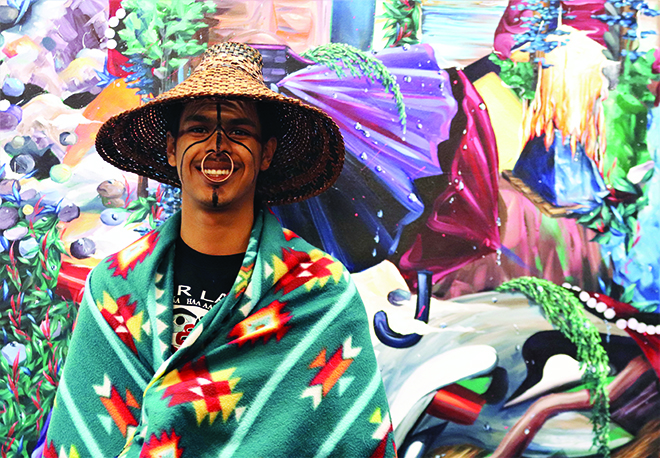
By Micheal Rios, Tulalip News
For the ninth consecutive year, the Pacific Northwest region and its tens of thousands of proud Native American citizens celebrated Indigenous Peoples’ Day on the second Monday in October. Replacing the former ill-conceived holiday dedicated to a slave trader and lost Italian navigator, Indigenous Peoples’ Day serves as a commemoration to honor the sacrifice of the past, the resiliency of the present, and the limitless potential of the future for our shared Indigenous culture.
“People may ask, ‘Why Indigenous Peoples’ Day and why not American Indian Day or Native American Day?’ It’s only appropriate that we honor the legacy of work that’s been done,” said educator Matt Remle (Lakota). His efforts, along with other dedicated Native activists, were instrumental in getting a proclamation voted on by the Seattle City Council and signed into law by then-mayor Ed Murray in 2014. “It’s not only honoring legacy, but when we say ‘Indigenous peoples,’ it’s referring to more than just the tribes of the colonized United States. We’re talking about all Indigenous peoples who’ve been impacted by settler colonialism around the world.”
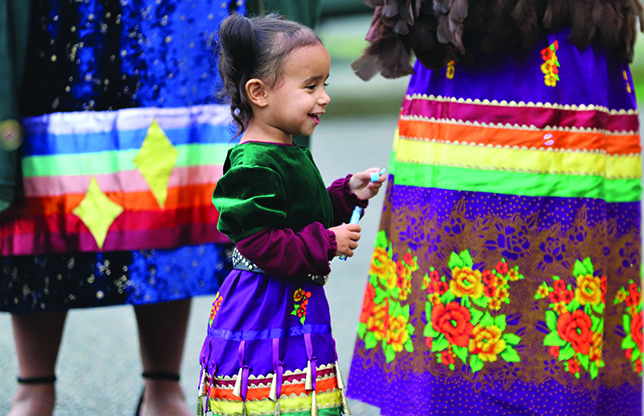
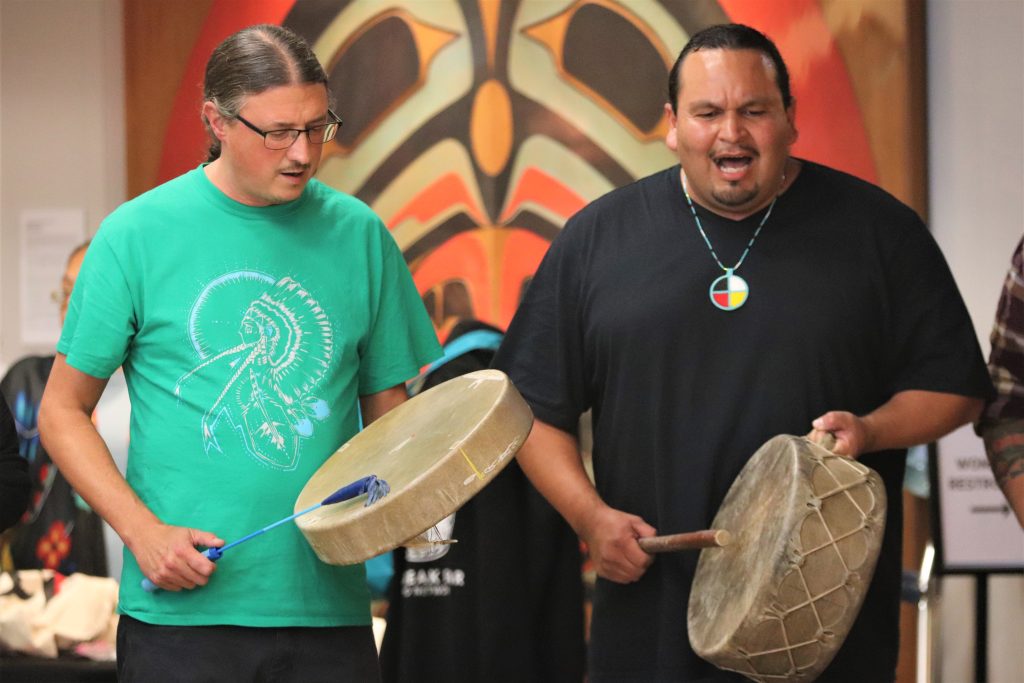
Since its inception into our shared experience, the Indigenous Peoples’ Day movement has spread to hundreds of cities across the nation. It’s been formally adopted by 19 state governments, and even a collection of universities and entire school districts are now including the day to celebrate global Indigenous cultures in their holiday calendars.
The movement has received so much praise, admiration and momentum that it even draws attention from The White House. Imagine that. Just days ago, in the United States capital of Washington, D.C, President Joe Biden from his Oval Office released the following proclamation:
“On Indigenous Peoples’ Day, we honor the perseverance and courage of Indigenous peoples, show our gratitude for the myriad contributions they have made to our world, and renew our commitment to respect Tribal sovereignty and self-determination. They challenge all of us to celebrate the good, confront the bad, and tell the whole truth of our history. And as innovators, educators, engineers, scientists, artists, and leaders in every sector of society, Indigenous peoples contribute to our shared prosperity.
“Their diverse cultures and communities today are a testament to the unshakable and unbreakable commitment of many generations to preserve their cultures, identities, and rights to self-governance. That is why, despite centuries of devastation and turmoil, Tribal Nations continue to thrive and lead in countless ways.
“Today, Indigenous peoples are a beacon of resilience, strength, and perseverance as well as a source of incredible contributions. Indigenous peoples and Tribal Nations continue to practice their cultures, remember their heritages, and pass down their histories from generation to generation.”
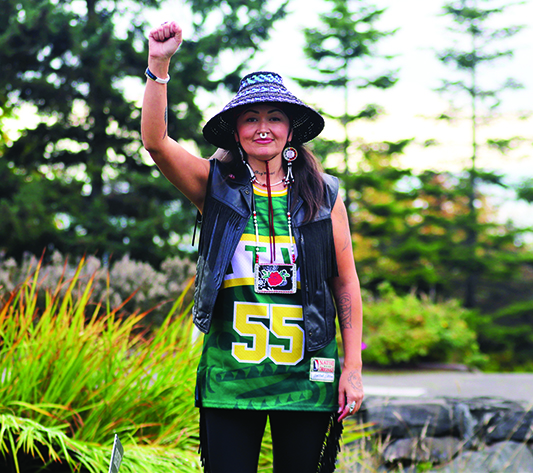
Thank you, Mr. President! When local Native culture bearers and their allies from around the Pacific Northwest gathered at Westlake Park on Monday, October 9, for a march and rally to celebrate Indigenous Peoples’ Day, they were indeed united in culture and honoring a rich heritage. The dedicated early morning group proudly wore cultural garb and traditional regalia while marching with a police escort from Westlake Park to Seattle City Hall.
“I love this moment. Feeling my drum vibrate through my soul, out of my feet into Mother Earth, and back up into my body,” shared Sarah Hart (Tulalip) after marching through Seattle’s urban landscape. “Empowering is an understatement. Being who we are as [Native] people is a way of life, it’s every aspect of who we are and it’s in every fabric of our being. We don’t celebrate the genocide of our people, we celebrate who we are as people. We celebrate together. One heart. One drum. One voice. Together.”
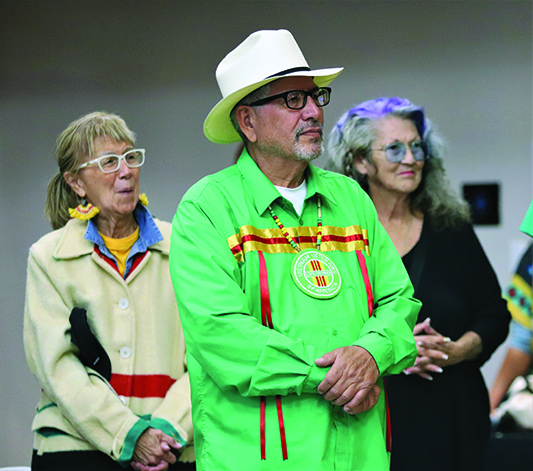
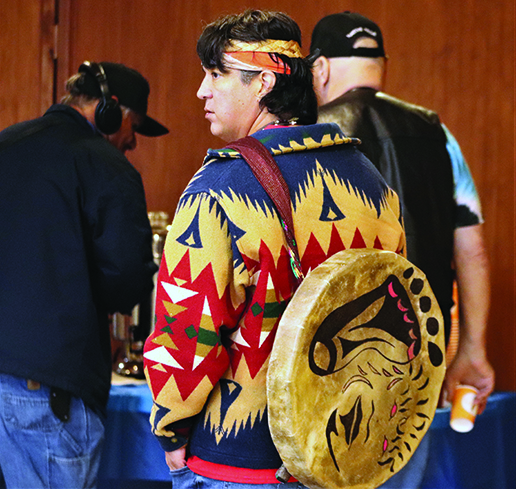
Later that evening, the festivities continued at Daybreak Star Cultural Center with a host of activities intended to celebrate all sovereign nations that comprise Turtle Island. Sponsored by the United Indians of All Tribes Foundation, the Daybreak Star gathering included hundreds of urban Natives, culture bearers from various tribal communities, and non-Natives who wanted to share in the memorable event.
A series of high-energy cultural offerings, representing Indigenous communities across the Americas, kept the multi-generational audience engaged well into the night. From diverse song and dance performances to heartfelt words filled with inspiration and positivity to even a lengthy BINGO session, which the elders loved, that awarded the winners prizes of traditional medicines.
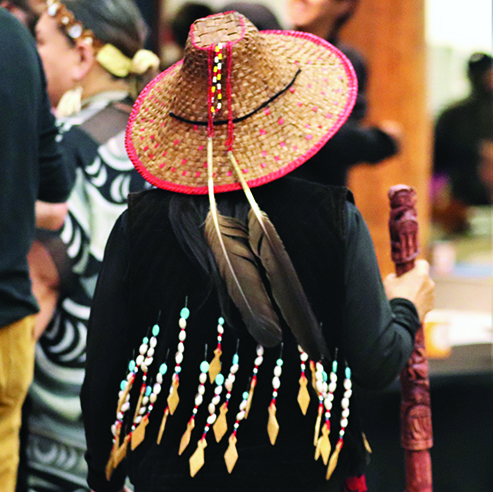
Outside Daybreak, a firepit grill was running at full capacity, in order to cook up enough locally caught salmon to feed all those in attendance. Hard at work manning the grill and ensuring all that salmon was cooked to perfection was Gregory Ebona (Tlingit/Haida). In between sets of salmon, he said, “To be able to provide food and feed all these beautiful people here with us is an honor.”
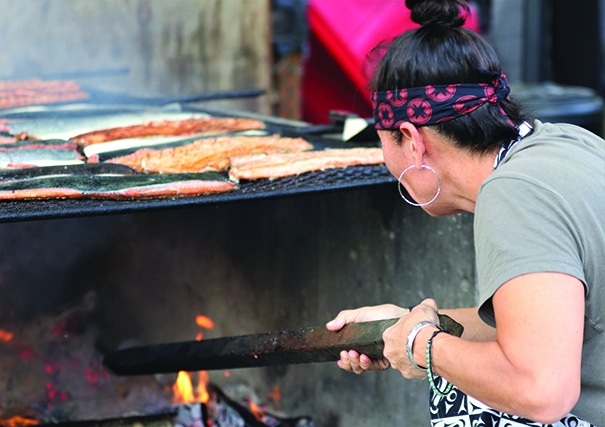
Keeping the outdoor fire going in order to sustain the flame responsible for cooking the food was Deedee Ebona (Tlingit/Haida). She connected her responsibility to keep the fire going with Indigenous peoples’ collective responsibility to keep the culture and our traditional teachings alive. “Being of service to our community is important, as is collaborating with our relatives from other tribes because our ancestors sacrificed so much to ensure their teachings, their culture would live on through us,” she shared.
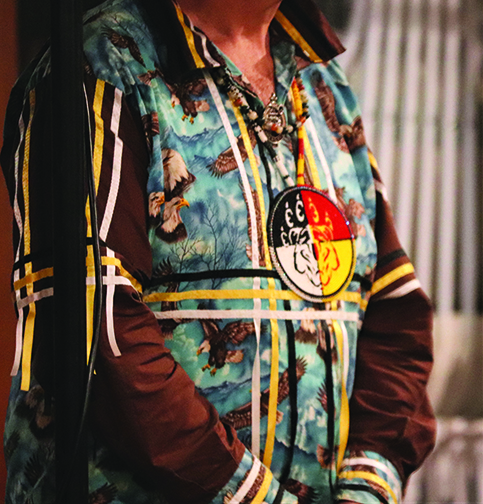
Daybreak Star’s evening-filled celebration paid tribute to a still thriving, still resilient culture that was once on the brink of extinction as a result of genocide, colonization, and termination acts. The shared sense of pride and glorious Indigenous identity radiated off those in attendance only amplified with each passing song, each inspirational message spoken, and every hug shared by strangers, who in that moment became family.
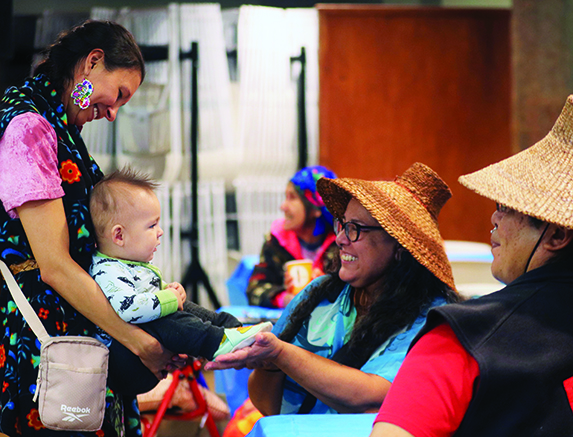
Therein lies the true beauty of being Indigenous. It makes every day a great day to be Indigenous.
Domestic Violence is not our tradition
Legacy of Healing hosts coastal jam in observance of National Domestic Violence Awareness Month
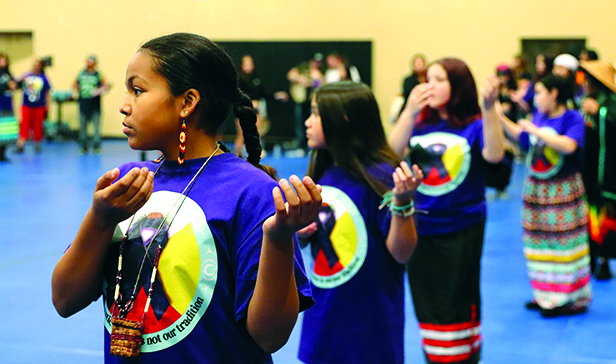
By Kalvin Valdillez, Tulalip News
“For many of our families there are silent wars happening in their homes,” said Jade Carela, Director of the Tulalip Legacy of Healing. “Our homes are supposed to be a place of comfort, but for victims of domestic violence they are a battlefield on which the person they love and trust is doing the unthinkable to them.”
A sea of purple washed over the community of Tulalip on the evening of Friday October 6. Signs were posted throughout the teen center campus, displaying messages such as, ‘I am not what happened to me. I am what I choose to become.’ And though the people were happy to gather together, there was a somber tone in the atmosphere, which indicated the seriousness of the event.
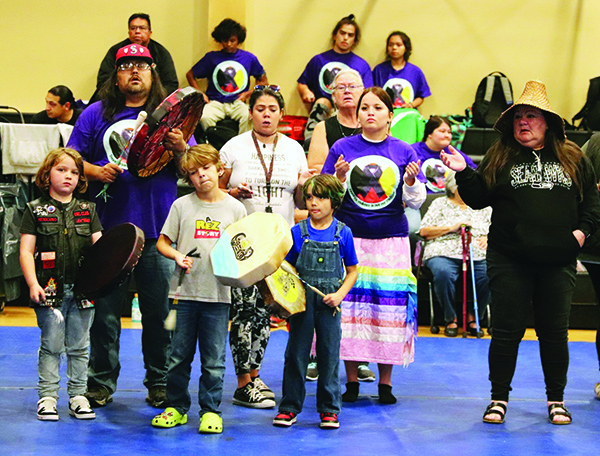
Taking part in a nationwide initiative, the Tulalip Legacy of Healing organized a night of culture to help spread awareness about a subject that may be uncomfortable to talk about, but must be addressed because of how often it occurs, especially within Native America.
The Legacy of Healing is a program that is designed to help support the local victims and survivors of domestic partnerships in several capacities, whether it’s just to supply inquiring minds with information and resources, or be in your corner throughout the court process, or even design a safety plan with you for when you’re ready to leave an abusive relationship.
Over the years, the program has increased its visibility in hopes to reach more local women and men who are experiencing domestic violence in their home lives. October has been a busy month each year for the Legacy of Healing as they’ve brought education, resources, and support to the community by participating in National Domestic Violence Awareness Month. Through a number of events and cultural/group activities, the Legacy of Healing has shown up for many DV survivors and victims of the community and walked alongside them through difficult times, letting them know they are supported, loved, and not alone.
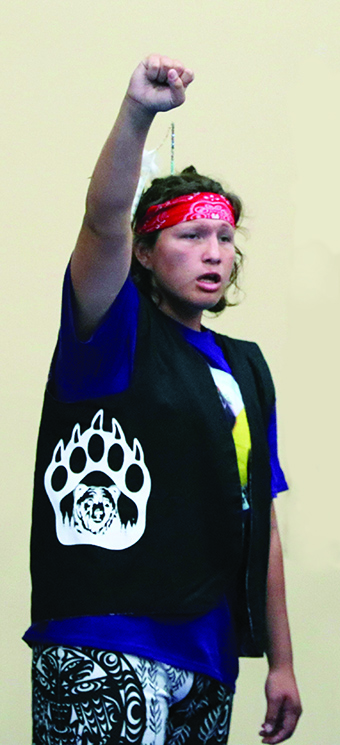
While engaging their participants and clients in activities and open discussions, the Legacy of Healing has provided many opportunities for people to learn about DV each October. That alone is extremely important because many are not able to recognize domestic violence as it’s occurring. And this is due to the fact that the majority of folks have misconceptions about what DV is exactly, and they do not realize that there are numerous ways an abuser asserts control and power in a relationship, including isolation, gaslighting, and manipulation, among many others.
This year, the Legacy of Healing organized a dinner and a coastal jam to bring awareness on a larger scale to the people. During previous DV Awareness Months, the Tulalip culture played a big role in the healing process, and the Legacy of Healing focused in on that aspect for this year’s gathering.
The evening began with a dinner inside of the teen center at the Don Hatch gymnasium. During the dinner, attendees received t-shirts designed by Tulalip and Quileute artist, Marysa Joy Sylvester. The front of the shirt featured a purple ribbon inside of a medicine wheel, and across the bottom it read, ‘Domestic violence is not our tradition’. Purple is the official color of awareness for the month, and October 19th is ‘Wear Purple Day’, so should you choose to stand in solidarity with the local survivors of DV, make sure to don your favorite purple attire and send a selfie on over to the Legacy of Healing.
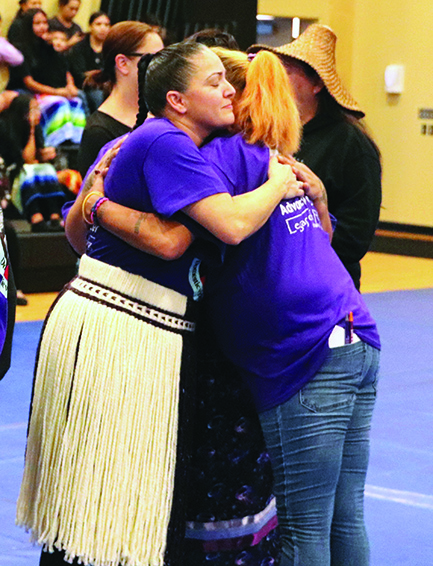
While the people enjoyed their meal, Jade opened the gathering with a few words, and shared some examples of what DV looks like in our community. Following her opening statements, Jade introduced the guest speaker, Malory Simpson. As Malory bravely shared her story, people shed tears upon hearing the years of suffering she endured. An important takeaway from her speech was for the people to see how she has since overcome those past tragedies in her lifetime, especially for those who have recently experienced DV or are currently experiencing it and are struggling to see an end or a way out of their personal situations.
Said Malory, “I feel that it is important for people to hear so they know it’s okay to share their own story. We all heal differently, and this is something that has helped me grow as a person and has helped me to heal from my journey of domestic violence. I hope that after hearing me share my story, people know how healing it is to release that trauma they’re holding on to.”
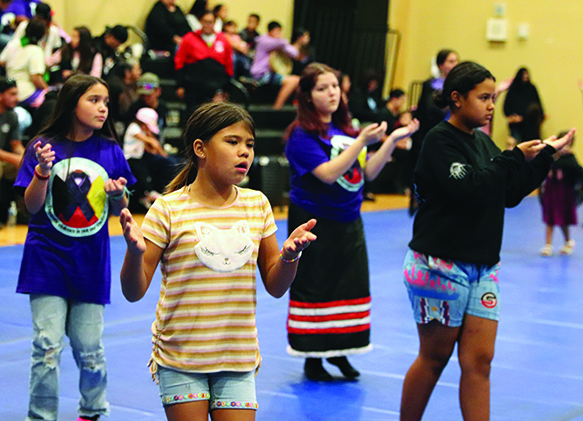
Malory’s words hit home for a few of the community members who have also dealt with abusive relationships. One of those people was none other than Tulalip Chairwoman, Teri Gobin, who then stood up in front of everybody and opened up, for the first time ever, about her past experience with domestic violence. And although the Chairwoman’s confession was shocking and heartbreaking, it was also a powerful moment for onlookers who realized that DV can happen to anybody. And after hearing those two moving testimonies, the people moved forward with the nights work with good hearts and a great deal of solemnity.
Tribal member Princess Jones expressed, “That was healing for me because I am a victim of domestic violence. It was hard for me not to cry in there because I’m not used to people supporting me. I was ashamed to say anything when I got abused. I hid from the cops; I wouldn’t let them take pictures. I hid from our community. But I understand now that the community cares, that our people care, and it’s okay for me to tell my story. Malory’s story was so powerful that Teri got up and shared too, and she let everyone know she never told anybody that before. Just that itself was healing. And so was the entire coastal jam, the songs bring me peace and helps me feel connected to everybody.”
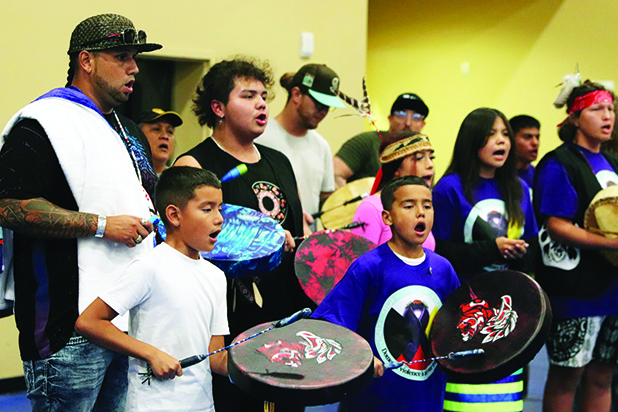
Following the dinner, the coastal jam took place at the Greg Williams Court. It was over three hours of good medicine as singers, dancers, and drummers from Tulalip and other nearby tribes brought healing to the people through culture and practice of the Tribe’s ancestral teachings. Infants, elders, and everyone in between, conducted important healing work through various prayers, dances, and chants during the gathering.
Among the many special moments from the coastal jam, event emcee, Josh Fryberg, called all the survivors and victims of DV to the floor. After taking a moment of silence to pay respect to all those going through a DV situation, the dancers formed a circle around the survivors and the drummers offered a prayer song, wrapping each and every one of them with love and support.
Malory shared, “It was amazing to see the strength in all of those who came to the floor to stand together. I want you all to know that you are not alone and that we all stand with you, just as we did on the floor that night. You are not what has happened to you. We are all worthy of a healthy relationship and that it is still possible. I hope that you know that you are loved and that you are not what your abuser may say that you are. You are beautiful!”
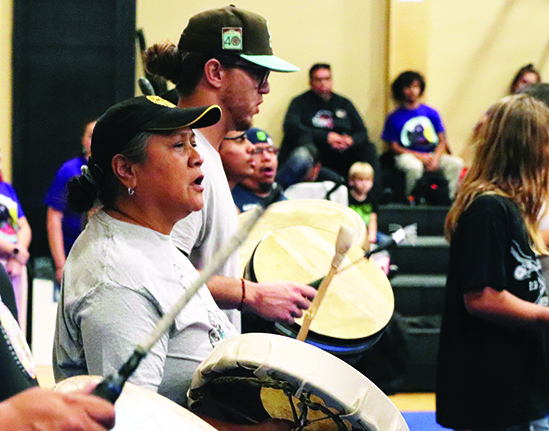
During the coastal jam, a blanket was placed at the center of the floor where people placed cash donations that will go directly to supporting the local survivors and victims of DV. A total of $233 was raised, which can assist a survivor as they transition away from a domestic partnership and begin anew in a safe and good way.
“From what we know, the reason we have these different crimes on our reservation is because it stems from the colonization that’s happened to us as a people,” Jade stated. “I think the healing piece for us is knowing this is not something that stems from us as a people. When you’re going through this process, that’s part of what you’re learning – that it’s not okay. It’s not who we are. It’s not something that comes from us. It’s something that was taught to us.
“Domestic violence is not just physical violence; it is a pattern of behavior in any relationship that is used to gain or maintain power and control over an intimate partner. This can be in the form of threats, intimidation, emotional, verbal, sexual, technological, financial, and stalking are some examples.”
The Legacy of Healing is asking for your assistance in raising awareness throughout the month by participating in their raffle ($5 for 1 ticket/$20 for 5 tickets) in which all of the proceeds go towards supporting survivors of DV. Over 20 prizes will be raffled off at the end of the month including a number gift cards and gift baskets, Xbox games, a ribbon skirt donated by Morning Star Creations, a beaded necklace by Winona Shopbell, beaded earrings by Paige Pettibon and Odessa Flores, and a cedar and abalone headband by Malory Simpson.
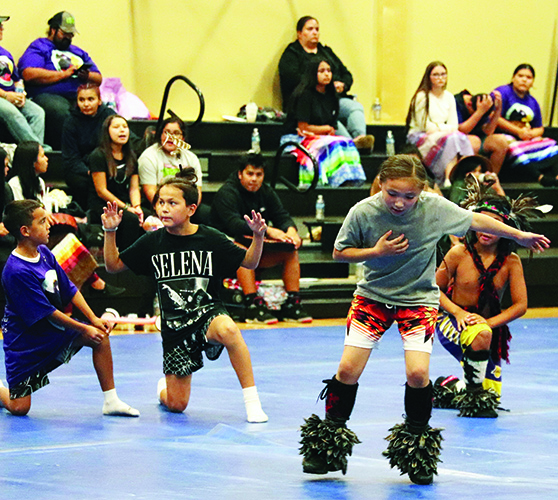
To purchase a raffle ticket, you can catch the Legacy of Healing team and the Tulalip Foundation at the following locations/dates/times:
- 10/16 at the Tulalip Tribal Court from 3:30 p.m. – 4:30 p.m.
- 10/19 on the second floor of the Tulalip Administration building (Carmel apple social) from 11:30 a.m. – 1:30 p.m.
- 10/21 at the Tulalip Resort Casino (Semi-General Council) from 9:00 a.m. – 1:00 p.m.
- 10/31 at the Tulalip Gathering Hall (Employee Halloween Luncheon) from 12:00 p.m. – 2:00 p.m.
If you are looking for additional ways to show your support throughout DV Awareness Month, you can still order your purple dranks, the Unity Elixir or the Violet Hope Lotus, from the café at the Tulalip Administration building, Ti Kupihali.
To help raise awareness within the Tribe’s governmental entity, the Legacy of Healing has been sending out informational e-mails each week of Domestic Violence Awareness Month. This week, the Legacy of Healing’s Victims Advocate, Marisa Chavez, shared:
Here are just a few of the signs that a loved one may be in an abusive relationship:
- A sudden change in clothing style (wearing clothes that cover more skin even when it’s hot out)
- They start to cancel plans more often.
- They have to check with partner before doing things (or anything)
- They seem anxious, paranoid, or depressed.
- They make excuses for their partner’s actions, or they take responsibility for their partner’s actions.
- Their partner puts them down or uses harsh or harmful language with them.
Here are some ways that you can be a support:
- Don’t blame or shame the person for staying in the relationship – Don’t make comments like “just leave him/her” or “I don’t know why you keep going back to him/her.”
- Educate yourself – Did you know that most survivors of DV leave about 7 times before they are totally done with that relationship. In Indian Country, it is closer to 15 times.
- Support their decision – You may not agree with them going back but you can still support and help when they need it.
- Give resources – Offering things such as websites or advocacy centers can be helpful. Legacy of Healing can give you resources to pass on.
- Understand the emotions – Know that they may be anxious, paranoid, have PTSD, or other emotional or mental health struggles because of the abuse. Your patience will go a long way.
- Check in on them – Calling or texting your friend or loved one lets them know that you are there for them and that you care. Ask them to spend time with you, this will help maintain the relationship and trust.
If you or anybody you know is experiencing an abusive relationship, please do not hesitate to call the Legacy of Healing at (360) 716-4100 or assistance. And if you are in a crisis or an emergency situation, the Legacy of Healing provided a list of three additional hotline numbers that you can utilize during your time of need:
- The National Domestic Violence Hotline 1-800-799-SAFE (7233)
- Strong Hearts Native Helpline: 1-844-762-8483
- Domestic Violence Services of Snohomish County 425-25-ABUSE (22873)
October 7, 2023 syəcəb
Follow the link to download the October 7, 2023 issue of the syəcəb